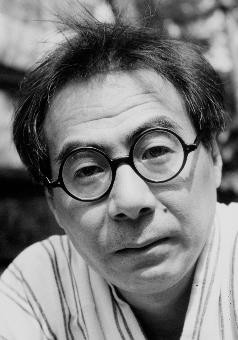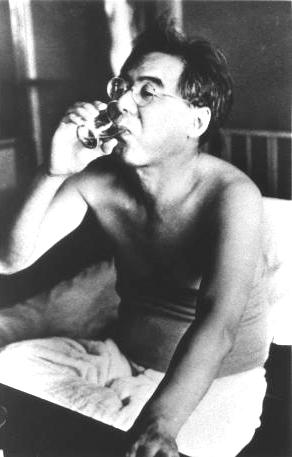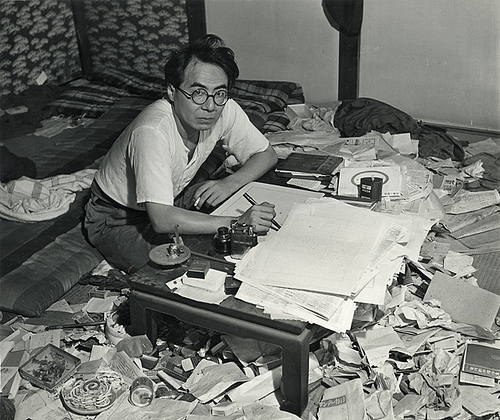<Back to Index>
- Writer Ango Sakaguchi, 1906
PAGE SPONSOR



Ango Sakaguchi (坂口 安吾 Sakaguchi Ango, October 20, 1906 – February 17, 1955) was a Japanese novelist and essayist. His real name was Heigo Sakaguchi (坂口 炳五 Sakaguchi Heigo).
From Niigata, Sakaguchi was one of a group of young Japanese writers to rise to prominence in the years immediately following Japan's defeat in World War II. In 1946 he wrote his most famous essay, titled "Darakuron" ("On Decadence"), which examined the role of bushido during the war. It is widely argued that he saw postwar Japan as decadent, yet more truthful than a wartime Japan built on illusions like bushido.
Ango was born in 1906, and was the 12th child of 13. He was born in the middle of a Japan perpetually at war. His father was the president of the Niigata Shinbun (Newspaper), a politician and a poet.
Ango wanted to be a writer at 16. He moved to Tokyo at 17, after hitting a teacher who caught him truanting. His father died from brain cancer the following year, leaving his family in massive debt. At 20, Ango taught for a year as a substitute teacher following secondary school. He became heavily involved in Buddhism and went to University to study Indian philosophy, graduating at the age of 25. Throughout his career as a student, Ango was very vocal in his opinions.
He wrote various works of literature after graduating, receiving praise from writers such as Makino Shin’ichi. His literary career started around the same time as Japan’s expansion into Manchuria. He met his wife to be, Yada Tsuseko, at 27. His mother died when he was 37, in the middle of World War II. He struggled for recognition as a writer for years before finally finding it with “A Personal View of Japanese Culture” in 1942, and again with “On Decadence” in 1946. That same year, the Emperor formally declared himself a human being, not a god. Ango had a child at 48 with his second wife, Kaji Michio. He died from a brain aneurysm at age 48 in 1955.